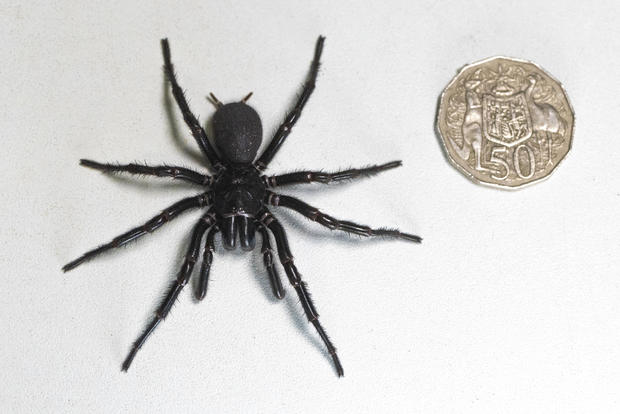
The largest male specimen of the world’s most poisonous spider, dubbed “Hercules” after the mythical hero of ancient Greece, has found a new home at the Australian Reptile Park.
The deadly Sydney funnel-web spider was found on the Central Coast, about 50 miles north of Sydney, and was initially given to a local hospital, the Australian Reptile Park said in a statement Thursday.
Spider experts from the nearby park retrieved it and soon realized it was the largest male specimen ever received from the public in Australia.
The spider measured 3.1 inches (7.9 centimeters) from foot to foot, surpassing the park’s record holder from 2018, the male funnel web named “Colossus.”
Sydney funnel-web spiders usually range in length from one to five centimeters, with females being generally larger than their male counterparts but not as deadly. They are predominantly found in forested areas and suburban gardens from Sydney, Australia’s most populous city, to the coastal city of Newcastle in the north and the Blue Mountains to the west.
“It is unreal” to see the spider
Reptile park spider keeper Emma Teni told the Sydney Morning Herald she was gobsmacked when she first saw Hercules. His massive size could be due to his living in a safe environment with plenty of food, allowing him to live longer – and grow larger.
“It is unreal to see him. Words cannot explain how unreal it is. You can see so much of his anatomy. With normal males and female [funnel-webs], you have to look closely, but with him, everything is so easy to see. It is so much bigger,” she said.
These arachnids have been responsible for 13 deaths, mainly in children, in the years before an antivenom was developed. Males are more toxic because their bite contains robustoxin, which impacts the nervous system.
“Hercules” will contribute to the reptile park’s antivenom program. Safely captured spiders handed in by the public undergo “milking” to extract venom, essential for producing life-saving antivenom.
“We’re used to having pretty big funnel-web spiders donated to the park. However, receiving a male funnel-web this big is like hitting the jackpot,” said Teni. “Whilst female funnel-web spiders are venomous, males have proven to be more lethal.
“With having a male funnel-web this size in our collection, his venom output could be enormous, proving incredibly valuable for the park’s venom program.”
Teni told the Sydney Morning Herald that extracting the venom is a delicate process which involves sitting down for up to 5 hours and milking between 24 and 48 spiders.
Every day, up to 36 spiders must be milked to ensure there is enough antivenom supply. The arachnids are housed in individual jars and placed inside a safety container (to prevent any escapes and potential bites).
The keepers then very gently blow on each spider – the slightest movement being enough for the creature to rear up, producing venom on its fangs. The keepers then use glass pipettes with a very light vacuum to collect the venom, which is then deposited in a collection jar and safely stored away.
Related: Spider Poison May Treat Erectile Dysfunction, Scientists Say
See all the latest news from Greece and the world at Greekreporter.com. Contact our newsroom to report an update or send your story, photos and videos. Follow GR on Google News and subscribe here to our daily email!



